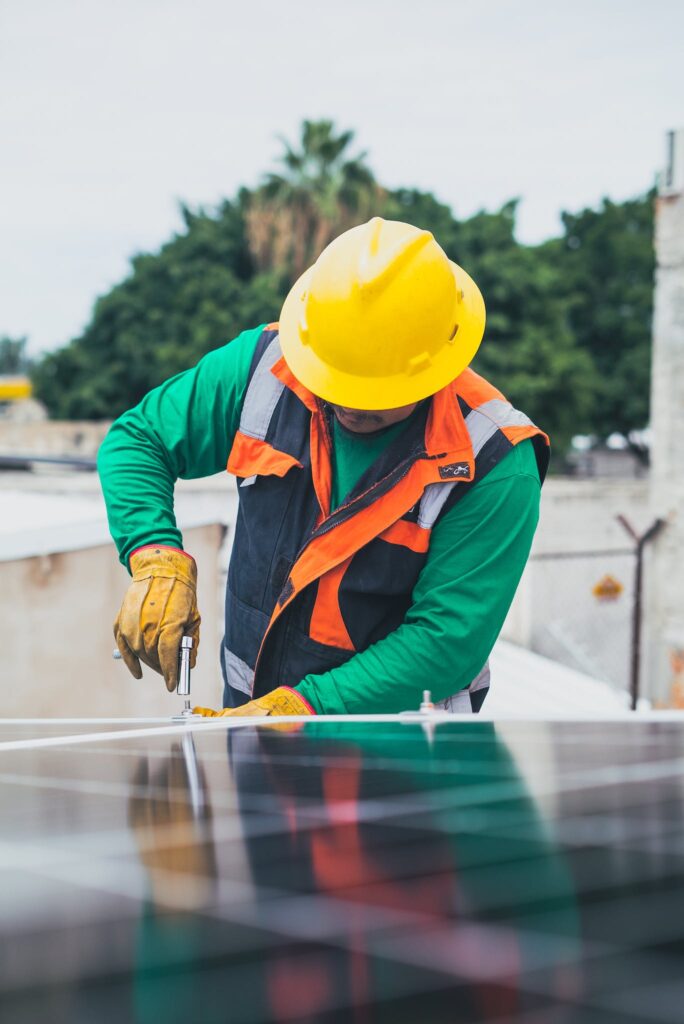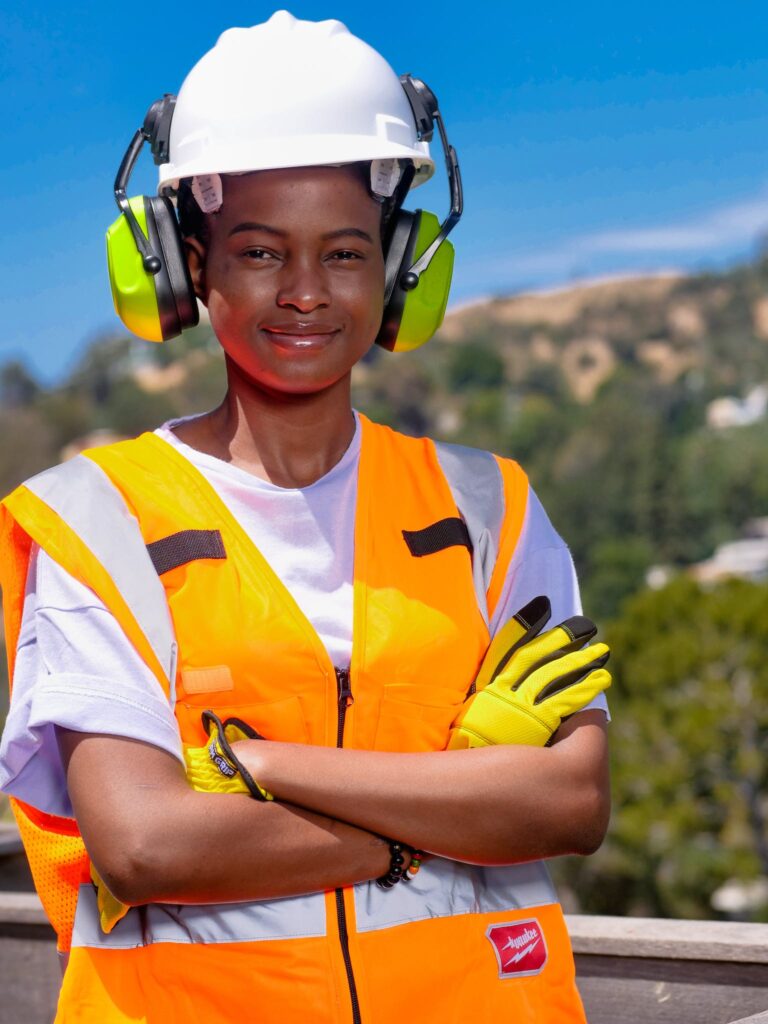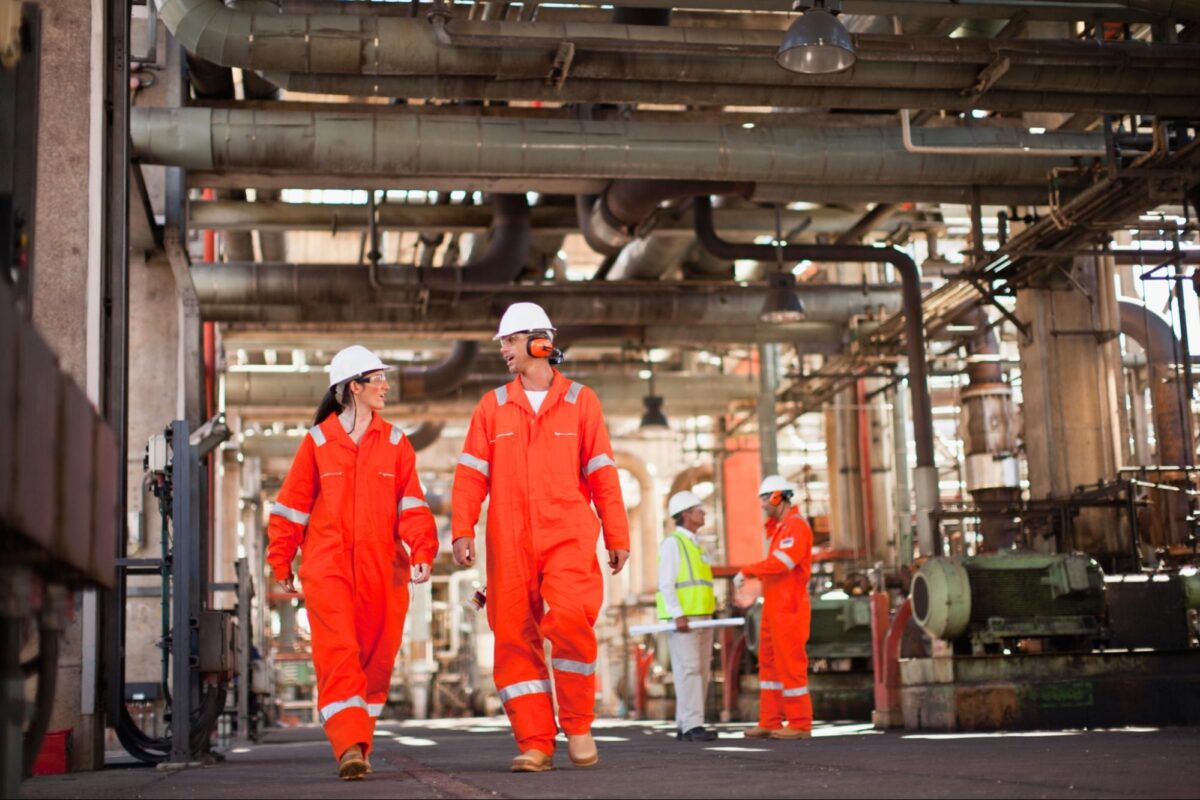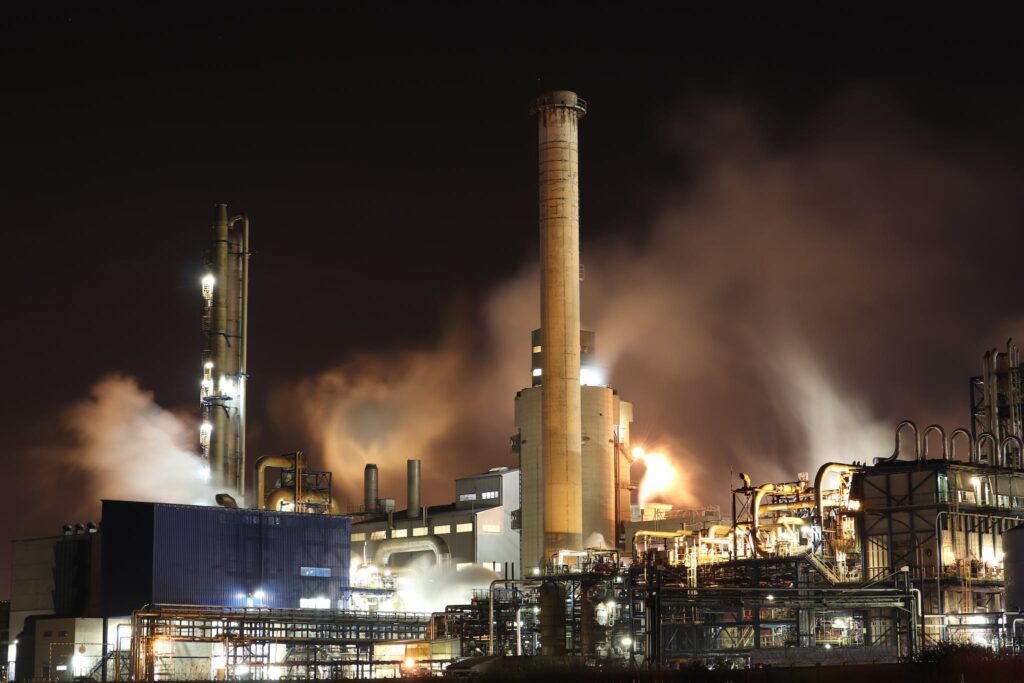The oil and gas sector is one of the most crucial industries globally, powering economies and ensuring the energy needs of nations are met. However, working in this sector can be perilous, with many potential hazards that workers may encounter daily. To mitigate these risks and ensure the safety and well-being of employees, Personal Protective Equipment (PPE) plays a vital role.
In this comprehensive guide, we’ll delve into the world of Personal Protective Equipment (PPE) in the oil and gas sector. We’ll explore the various types of PPE required, their importance, and how they aid in safeguarding the lives of those working in this high-risk industry.
The Importance of PPE in the Oil and Gas Industry
Personal Protective Equipment, commonly referred to as PPE, is a term that encompasses a wide range of equipment and attire designed to protect workers from occupational hazards. In the oil and gas sector, PPE is not just a requirement; it’s a lifeline. Here’s why it’s so crucial:
1. Preventing Fatal Injuries
The oil and gas industry involves working with heavy machinery, corrosive chemicals, and extreme temperatures. Without the proper PPE, the risk of severe injuries or even fatalities increases significantly. Helmets, gloves, and steel-toed boots, for instance, protect workers from head injuries, burns, and crushed feet.
2. Ensuring Regulatory Compliance
Oil and gas companies are subject to stringent safety regulations. Failing to provide employees with the necessary PPE can result in severe legal consequences and hefty fines. Staying compliant is not just a matter of ethics but also a business necessity.
Types of PPE in the Oil and Gas Sector

The oil and gas sector requires a diverse range of PPE due to the numerous risks associated with the industry. Some of the most common types of PPE in this sector include:
1. Head Protection
Head protection is crucial in the oil and gas industry to shield workers from falling objects, impact with hard surfaces, or contact with electrical hazards. The commonly used PPE for head protection includes:
- Hard Hats: These offer a first line of defense against falls, blows, or falling objects. They are commonly made from high-density polyethylene or other durable materials equipped with a suspension system to absorb shock.
- Bump Caps: Although they provide less protection than hard hats, bump caps are suitable for areas with low head clearance or for protecting against accidental bumping or scraping.
- Safety Hoods: These are used when there is a risk of chemical or thermal burns. Made from fire-resistant materials, these hoods cover the entire head, neck, and often the shoulders, providing a high level of protection.
- Helmet-Mounted Face Shields: For tasks that involve flying particles or splashing chemicals, these shields offer additional protection to the face without sacrificing the safety features of the hard hat.
2. Eye and Face Protection
Eye and face protection is paramount in the oil and gas industry, where workers are often exposed to harmful substances and potential mechanical impacts. The type of PPE used for eye and face protection typically includes:
- Face Shields: These are used with safety goggles for tasks that pose a risk of facial burns or splashes of corrosive substances. Face shields offer a wide protection area, covering the entire face while allowing the user to maintain clear visibility.
- Safety Goggles: These are designed to shield the eyes from chemical splashes, dust, and small particles. They provide a secure fit around the eyes, preventing harmful substances from entering.
- Welding Shields: For operations such as welding or cutting, which can emit intense light and heat, welding shields are used. They not only protect the eyes from bright light and sparks but also shield the face from heat and flying particles.
- Safety Glasses: For general protection against flying debris or dust, safety glasses are used. They offer less comprehensive protection than goggles but are suitable for lower-risk tasks.
3. Respiratory Protection
Respiratory Protection is paramount in the oil and gas industry, especially considering the potential exposure to harmful gases, vapors, or insufficient oxygen levels. There are various types of respiratory protection equipment utilized in this sector:
- Disposable Respirators: These are commonly used for protection against dust, fumes, mists, and other non-toxic airborne particles. They are typically lightweight, comfortable and designed for single-use.
- Reusable Respirators: These respirators offer protection against particulates, gases, and vapors. They have replaceable filters or cartridges and can be cleaned and reused. They offer a higher level of protection but also require more maintenance.
- Powered Air-Purifying Respirators (PAPR): These devices include a battery-powered fan that pulls air through filters and circulates it around the face. They offer an increased level of protection and are particularly useful in situations where breathing through a filter may be challenging.
- Self-Contained Breathing Apparatus (SCBA): Used in oxygen-deficient environments or where unknown contaminants are present, SCBA provides the highest level of respiratory protection. It consists of a wearable unit supplying breathable air from a tank, allowing workers to breathe in an otherwise inhospitable environment.
- Escape Respirators and Hoods: These devices are intended for emergency use, providing a short-term supply of breathable air to allow workers to evacuate hazardous areas.
4. Hand Protection
The hands are often at risk from chemicals, cuts, and abrasions. Gloves made from durable materials provide the necessary protection.
- Chemical-Resistant Gloves: These are made from materials like nitrile or latex, designed to resist chemical permeation and degradation. They are ideal for tasks involving the handling of corrosive chemicals or solvents.
- Cut-Resistant Gloves: Made from materials like Kevlar or Dyneema, these gloves are designed to protect the hands from cuts, slashes, and punctures. They are typically used in environments where sharp objects or tools are handled.
- Impact-Resistant Gloves: These gloves are equipped with padding and reinforced areas to protect the hands from crushing or pinching injuries. They are useful in tasks where heavy machinery or equipment is used.
- Insulated Gloves: These gloves provide protection from extreme heat or cold, making them ideal for working in high-temperature environments or during winter months in certain geographical locations.
- Anti-Vibration Gloves: These gloves help reduce the effects of vibration from tools or machinery, reducing the risk of hand-arm vibration syndrome (HAVS) in workers.
5. Foot Protection
Foot protection is an integral part of personal protective equipment in the oil and gas industry, given the risk of foot injuries from falling objects, heavy machinery, and slippery surfaces. Different tasks necessitate different types of footwear, such as:
- Steel-Toe Boots: These boots have a steel cap embedded in the toe area to protect the foot from crushing injuries due to falling objects or heavy equipment. They are the standard in many industrial settings.
- Metatarsal Boots: In addition to a steel toe, these boots feature a guard that covers the instep area to protect the upper foot and toe area from heavy falling objects.
- Slip-Resistant Boots: These boots have soles specially designed to grip onto the surface, reducing the risk of slipping on wet or slick surfaces.
- Puncture-Resistant Boots: These boots have a plate in the midsole to protect the foot from sharp objects that might pierce the sole.
- Electrical Hazard Boots: Designed for working in areas with the risk of electrical hazards, these boots are made of non-conductive materials to reduce the risk of electrical shock.

6. Body Protection
Body protection is key to ensuring the safety of workers in the oil and gas industry, especially in the face of various potential hazards such as chemical exposure, heat, and fire. Different tasks necessitate different types of body protection:
- Coveralls: Typically made from durable, heavy-duty materials, coveralls offer full-body protection against dirt, grime, and minor injuries. They are often worn over regular clothing and are particularly useful for tasks that involve exposure to dirt or non-hazardous materials.
- Chemical-Resistant Suits: Specifically designed for tasks involving chemical handling or exposure, these suits are made from materials that resist chemical permeation and degradation. They protect the worker’s body from potential harm caused by corrosive chemicals or solvents.
- Flame-Resistant Suits: Made from materials that resist ignition, these suits are essential for tasks that involve the risk of fire or explosions. They are designed to not only resist catching fire, but also to self-extinguish should they catch fire, thereby minimizing the risk of burn injuries.
- High-Visibility Clothing: For tasks carried out in low visibility conditions or at night, high-visibility clothing is vital. Usually in bright colors and equipped with reflective materials, this type of clothing ensures the worker is clearly visible to others, helping prevent accidents.
- Insulated Clothing: For tasks in cold conditions or during winter months, insulated clothing helps keep workers warm, preventing hypothermia or frostbite. This could include insulated coveralls, jackets, and trousers.
Proper Usage and Maintenance of PPE

Having the right PPE is just the first step. Equally important is ensuring that it is used correctly and maintained adequately. The responsibility for both lies with the employer and the employees. Here’s what you need to know:
1. Training
Employees should receive thorough training on the correct use and maintenance of PPE. This includes understanding when and where specific equipment should be worn. Training should also cover how to put on and remove PPE correctly, as well as any other instructions specific to the type of equipment.
2. Regular Inspections
Employers must conduct regular inspections of PPE to identify signs of wear and tear. Damaged or deteriorating equipment should be replaced immediately. Employees should also inspect their PPE before each use and report any issues to the employer.
3. Proper Storage
PPE should be stored in a clean, dry, and easily accessible location. This ensures that it remains in good condition and is readily available when needed. For example, wet or dirty PPE should be cleaned and dried before being stored.
4.Proper Cleaning and Maintenance
PPE should be cleaned regularly according to the manufacturer’s instructions. For reusable equipment, this may involve washing with soap and water, while disposable items should be discarded properly after use. It is also essential to inspect PPE for damage after cleaning.
Role of FAT FINGER in PPE Management
Maintaining records of PPE usage and maintenance is crucial for ensuring compliance and safety in the workplace. FAT FINGER offers a user-friendly solution for tracking and managing PPE. Here are some of its key features:
- Digital Inspection Forms: Easily customizable digital forms can be created for each type of equipment, allowing for quick and efficient inspections.
- Real-Time Data Tracking: The software records all inspections and maintenance, providing real-time data on the condition of PPE. This allows for timely replacements and reduces the risk of using defective PPE.
- Automatic Reminders: The software can be set to send automatic reminders for scheduled inspections or maintenance, ensuring no PPE is overlooked.
- Comprehensive Reporting: Customizable reports provide an overview of PPE usage and maintenance, making it easier for employers to identify any trends or issues that need to be addressed.

With the help of FAT FINGER, employers can ensure that their employees have the necessary PPE and that it is maintained correctly, promoting a safe and compliant workplace. So don’t wait any longer – invest in this essential tool today! Remember, proper usage and maintenance of PPE can save lives and prevent injuries, making it an integral part of workplace safety protocols.
About FAT FINGER
Ensure front-line teams do their work correctly every time. Drag & drop digital procedures that unlock operational excellence.
In seconds anyone can build and deploy enterprise-grade mobile applications using an easy drag-and-drop no-code builder.
FAT FINGER uses machine learning to coach app users in real-time to make safer and improved decisions.
Try building your digital procedure on FAT FINGER for free @ www.fatfinger.io



